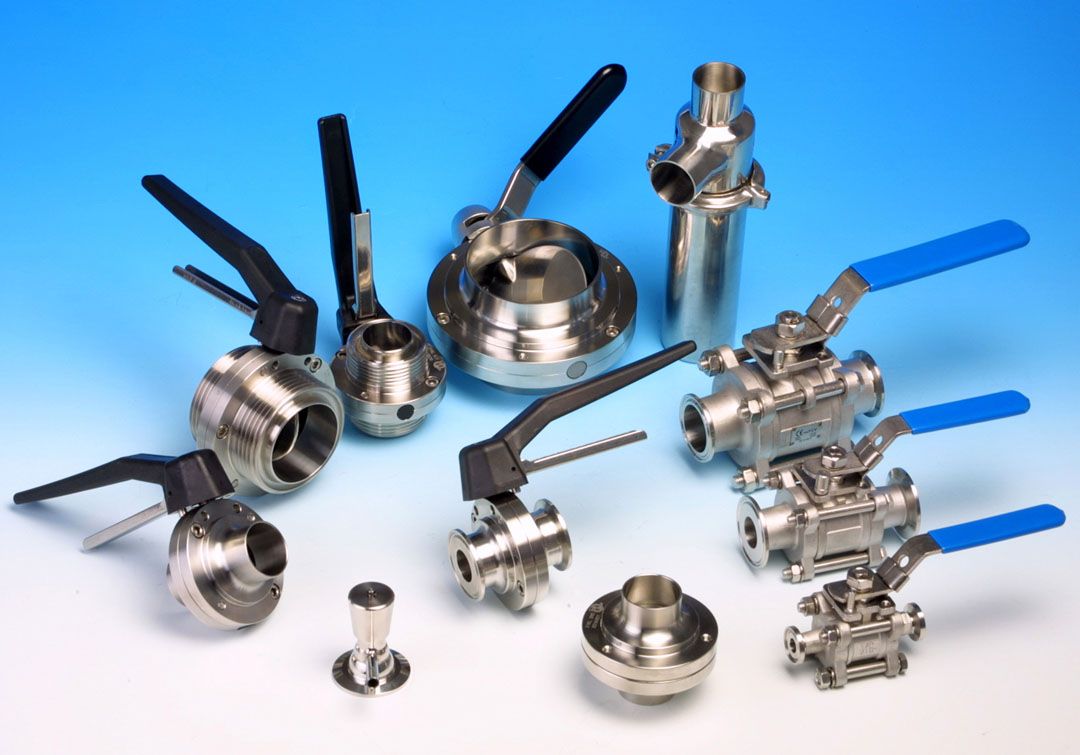
Valves are mechanical devices used to control the flow and pressure within a system, typically in fluid control systems, gas pipelines, and various industrial processes. They can either allow or restrict the flow of liquids, gases, and slurries. Valves are essential components in systems such as plumbing, waterworks, heating systems, and industrial applications like oil, gas, and petrochemical production.
| Type of Valve | Description |
|---|---|
| Gate Valve | Used for on/off control in a fully open or closed position. Common in pipelines where a tight seal is required. |
| Ball Valve | Provides quick on/off control with a rotary motion. Ideal for high-pressure systems and fluid isolation. |
| Globe Valve | Primarily used for regulating flow. Offers good throttling capabilities. |
| Check Valve | Allows fluid to flow in only one direction, preventing backflow. |
| Butterfly Valve | Lightweight, cost-effective, and used for regulating flow. Common in large pipeline systems for flow control. |
| Pressure Relief Valve | Automatically releases excess pressure to prevent system damage. Common in pressure vessels, boilers, and compressors. |
| Needle Valve | Used for precise flow control in low-flow applications. Common in laboratories and small-scale industrial systems. |
| Control Valve | Used in systems requiring automatic flow control based on sensors and signals. Common in industrial applications with automated processes. |
| Plug Valve | Provides tight shut-off and is often used for regulating and directing flow. |
| Specification | Details |
|---|---|
| Pressure Rating | Valves are rated for specific pressure ranges (e.g., 150 psi, 300 psi, 600 psi, etc.). The pressure rating determines the maximum pressure the valve can handle safely. |
| Temperature Rating | Valves are designed to withstand certain temperature ranges (e.g., -50°F to +750°F). This rating is critical in applications like steam or chemical processing. |
| Material | Valve bodies are typically made from metals like stainless steel, brass, cast iron, or alloy materials, each selected based on the fluid or gas they will handle. |
| Size | Valves come in various sizes, commonly ranging from ¼” to 24” in diameter or even larger. |
| Actuation Type | Valves can be manually operated, electrically actuated, pneumatically actuated, or hydraulically actuated. |
| End Connections | Common connection types include flanged, threaded, and welded connections. |
| Material | Typical Use |
|---|---|
| Stainless Steel | Common in applications requiring corrosion resistance. Types: 304, 316, 316L. |
| Brass | Used in low-pressure applications and for potable water systems. |
| Cast Iron | Durable material for lower-pressure systems, often used in gate valves. |
| Bronze | Often used in maritime and marine applications due to its corrosion resistance. |
| Alloy Materials | Specialized alloys like Inconel, Monel, and Hastelloy are used in extreme conditions like high temperatures or corrosive fluids. |
| Plastic (PVC, CPVC, PFA) | Used in applications where corrosion resistance is required at lower pressures, such as water treatment or chemical processing. |
| Standard | Description |
|---|---|
| API 600 | Standard for gate valves used in the petroleum and natural gas industry. |
| ANSI B16.34 | Provides requirements for valve design, pressure, and temperature ratings. |
| ASME B16.5 | Standards for flanged valves. |
| ISO 9001 | International standard for quality management in valve manufacturing. |
| BS 5351 | Standard for steel globe valves used in high-temperature environments. |
| DIN 3352 | Standard for gate valves in waterworks applications. |
| NACE MR0175 | Corrosion-resistant materials used for valves in sour gas environments. |
When selecting a valve, the following factors should be considered:
Proper maintenance is essential to ensure valves perform optimally and have a long service life: